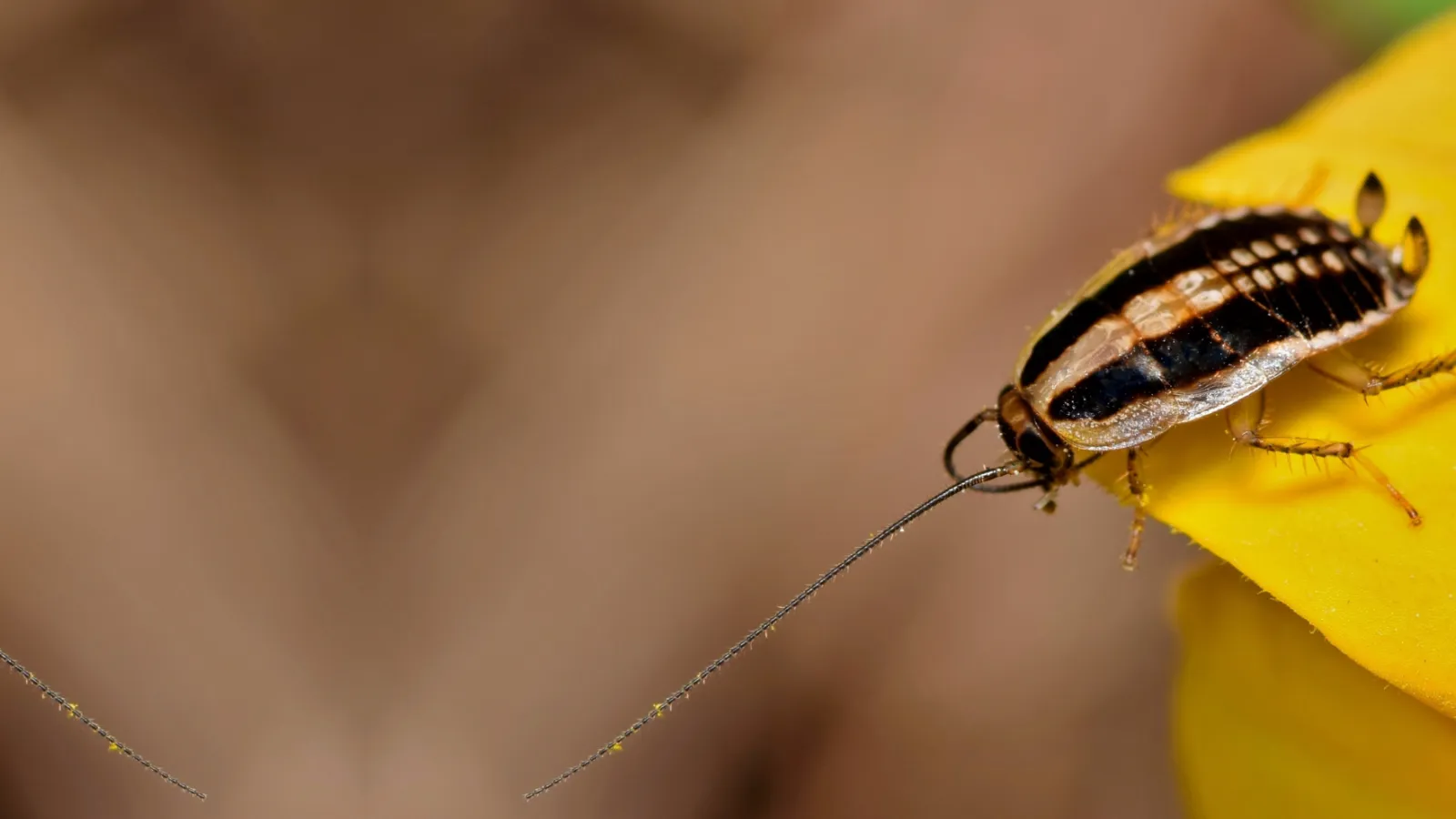
Asian Cockroaches
Latin Name: Blattella asahinai
The Asian cockroach (Blattella asahinai) is a small, light brown cockroach species that closely resembles the German cockroach in appearance but has very different behaviors and habitat preferences. Originally native to Southeast Asia, the species was introduced to the United States and is now prevalent in parts of the southeastern U.S.
Key Characteristics
Appearance:
- Light brown with two dark parallel stripes on the pronotum (the shield-like area behind the head), similar to the German cockroach.
- Adults are about 1/2 to 3/4 inch long.
Wings and Flight:
- Unlike the German cockroach, Asian cockroaches are strong fliers and can travel considerable distances.
- They are often attracted to light, which is unusual for cockroach species.
Habitat:
- Prefers outdoor environments, especially in shaded, moist areas with mulch, leaf litter, and grassy lawns.
- Commonly found in suburban and rural areas rather than indoors.
Behavior
Activity:
- Primarily active during the evening and nighttime, drawn to porch lights, streetlights, and illuminated windows.
Diet:
- Omnivorous, feeding on organic debris, decaying plant material, and small insects.
Reproduction:
- Females produce oothecae (egg cases), which are deposited outdoors in moist, protected areas.
- The reproductive rate is high, contributing to their population growth in favorable conditions.
Differences from German Cockroaches
- Habitat:
- Asian cockroaches are predominantly outdoor pests, while German cockroaches are indoor pests that thrive in kitchens and bathrooms.
- Behavior:
- Asian cockroaches are attracted to light and are capable of flight; German cockroaches are flightless and avoid light.
Pest Concerns
While Asian cockroaches do not pose the same level of infestation risk as German cockroaches, they can still be a nuisance:
- They may enter homes through open doors and windows, especially in the evening when lights are on.
- Their presence can be alarming due to their flying ability and resemblance to the German cockroach.
Control and Prevention
Environmental Modifications:
- Reduce outdoor lighting or switch to yellow "bug lights" to minimize attraction.
- Clear leaf litter, mulch, and debris near the home to eliminate their preferred habitat.
Exclusion:
- Seal cracks, gaps, and crevices around doors, windows, and foundations.
- Install screens on windows and doors to keep them out.
Chemical Control:
- Outdoor insecticides and baits can be effective in reducing populations.
- Target areas where they breed, such as mulched flowerbeds and leaf piles.
Professional Pest Control:
- For persistent infestations or heavy outdoor populations, a professional pest control service can provide targeted treatments.
By managing the outdoor environment and addressing attractants, homeowners can significantly reduce the nuisance caused by Asian cockroaches.
Similar Pests: German Cockroach, American Cockroach
